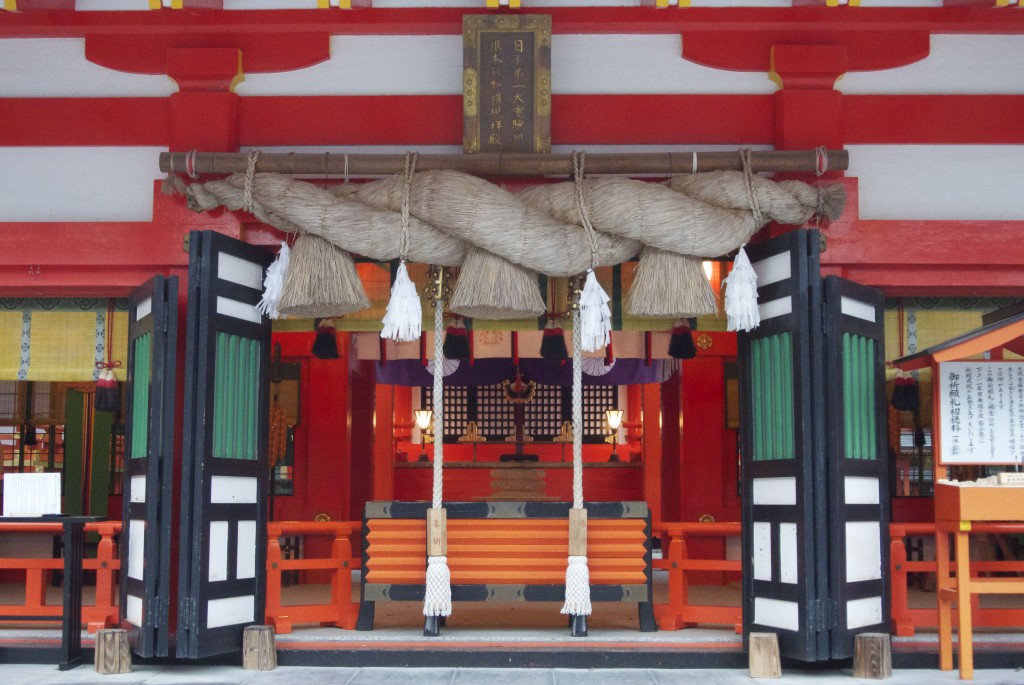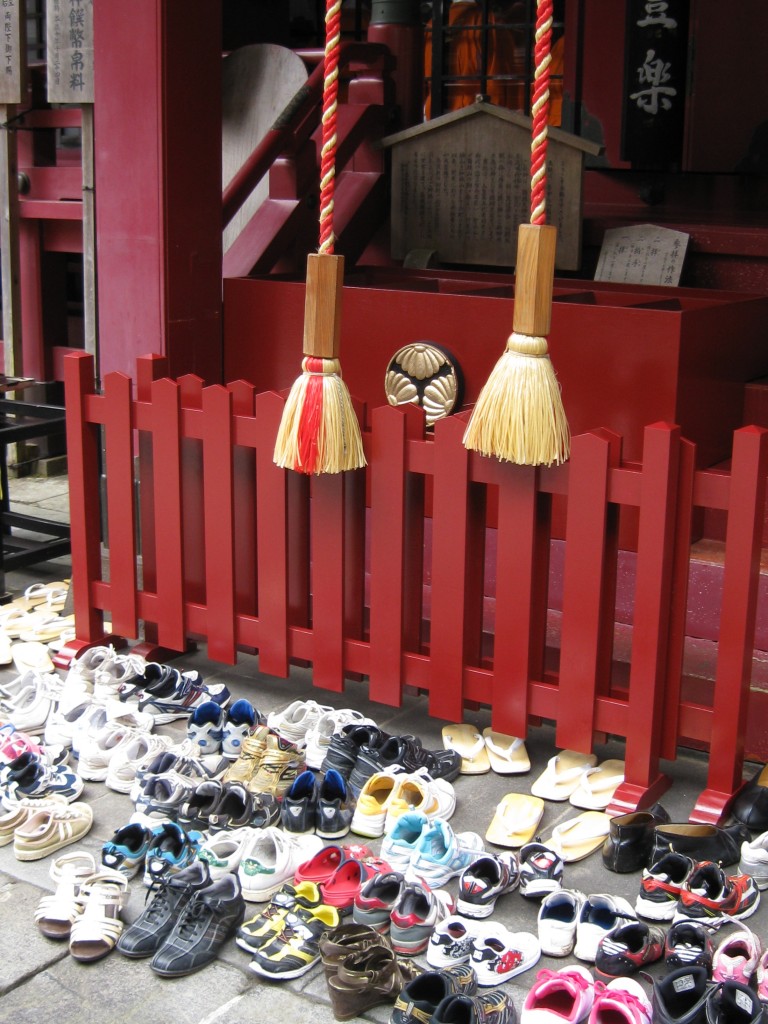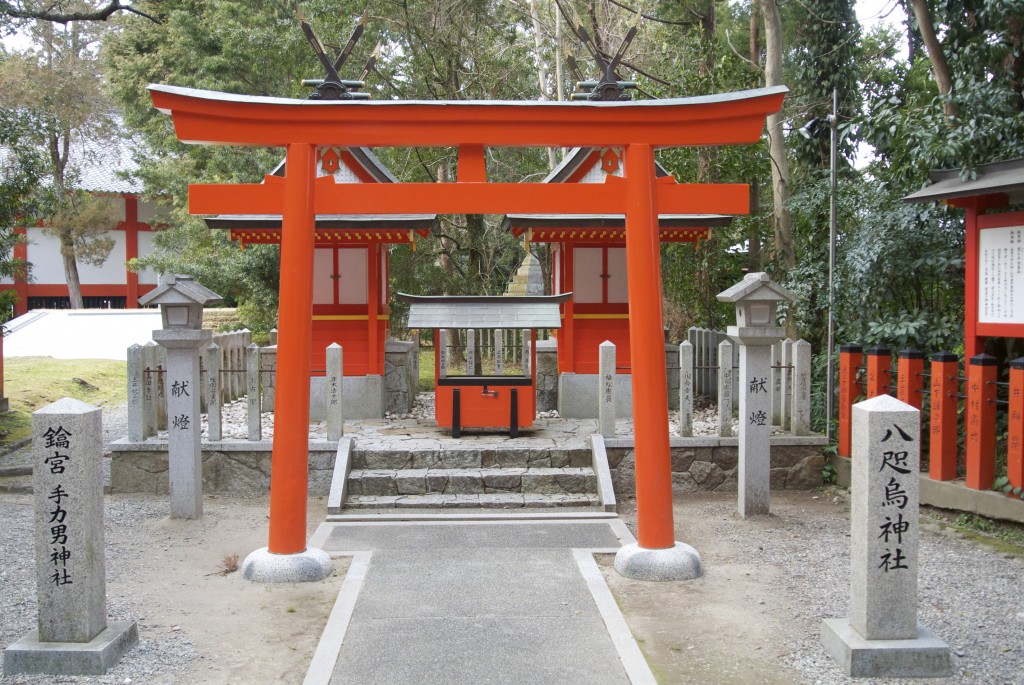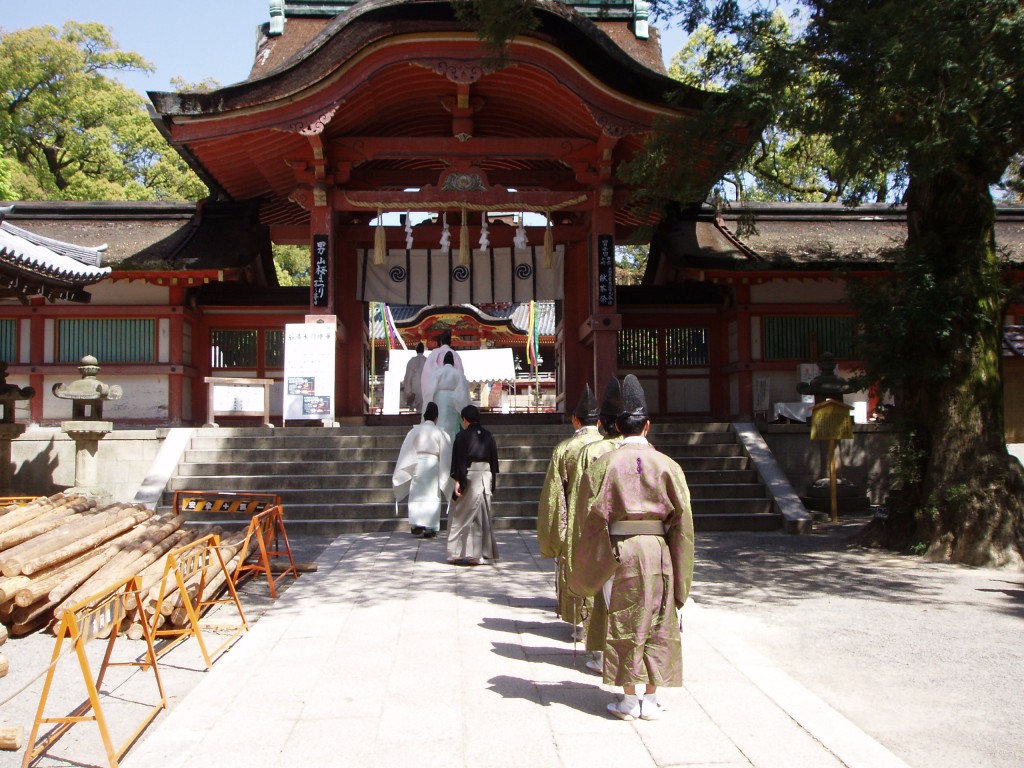
Some shrines come in plain wood to harmonise with their surrounds, but not Hayatama Taisha in Kumano with its bold and eye-catching colours
The word jinja is usually translated as “shrine,” and the Buddhist “tera” is translated as “temple.” The shrine is a place of worship where a particular kami or group of kami are said to reside or make themselves manifest when called upon. The jinja generally consists of the shrine grounds (keidai), main hall (honden), worship hall (haiden), path (sando), symbolic entrance gate (torii), and water basin (temizuya).

Shoes off when entering the haiden, or Worship Hall, which can be recognised by the bell ropes hanging before it
The typical jinja includes a small, enclosed space where resides the goshintai, an object of some sort into which the kami descends. It is the most sacred object in the shrine and housed inside the main building (honden). The honden may be joined to a worship hall (haiden), where ceremonies are performed, or it may stand alone.
The buildings may be either simple, unpainted wooden structures or elaborately detailed and decorated ones. They may be in one of a number of traditional styles or any number of variations. Although shrines are distinct from Buddhist temples, there are architectural styles that incorporate aspects of both. Before the Meiji period, large complexes combining shrines and temples were common, but now they are separate entities. They often stand side by side, and small shrines are sometimes found on temple grounds.
Shrine names come from either the name of the kami they enshrine, such as Hachiman or Inari; the place name, such as Ise or Izumo; or, particularly in relation to shrines that worship the same kami, both place and kami names, such as Tsurugaoka Hachimangu or Iwashimizu Hachimangu.
In addition, they have a shago (a word that distinguishes it as a shrine). There are six shago, of which jinja is the most common. Others include gu as in Hakozakigu, taisha as in Suwa Taisha, and daijingu as in Toyouke Daijingu (the outer shrine of Ise). Sha is another reading for the second character used in jinja and is generally used in rank designations (such as taisha—“first rank,” chusha—“second rank,” shosha—“third rank,” etc.).
Miya is another reading of the character for gu, and like sha, it is usually used to designate a type of shrine, such as “mountain shrine” (yamamiya) or “primary shrine of a province” (ichinomiya). Finally, jingu, as in Ise Jingu and Heian Jingu, is used as a term for shrines related to the imperial house. (It is also used for some of those founded during the Meiji period.)
Be that as it may, a jinja is easy to spot, as it will always have a torii standing in front of it.

Where there's a torii, there's a shrine... or in this case a subshrine of Hayatama Taisha honouring Yatagarasu, the three-legged crow

Iwashimizu Hachiman-gu takes its name from the place (Iwashimizu) and the tutelary kami (Hachiman), together with one of the six 'shago' indicating it is a shrine

Leave a Reply